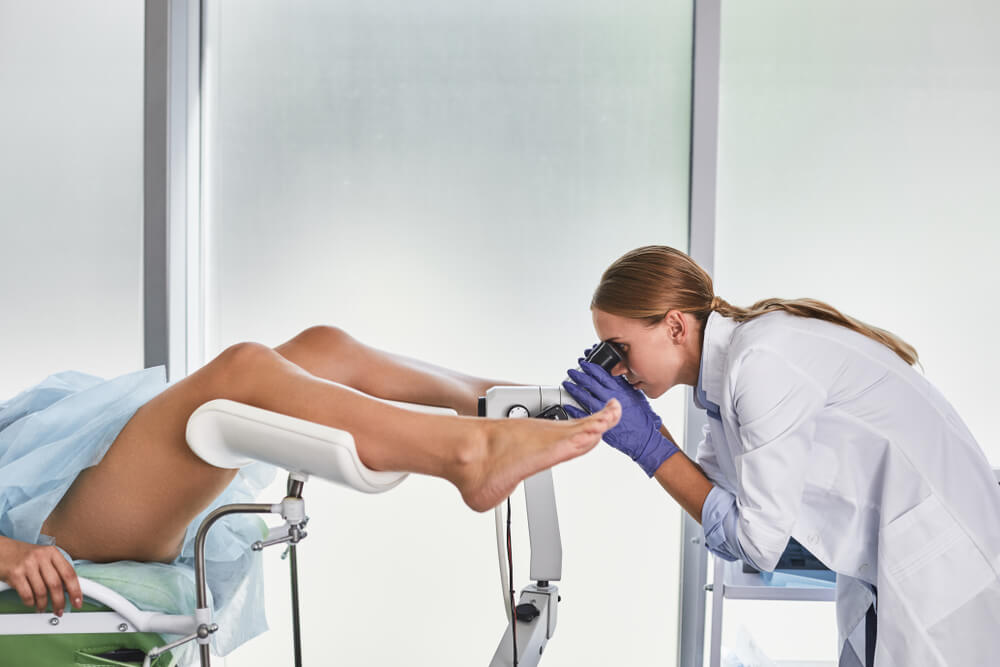Your First Pelvic Exam
 Having routine pelvic exams are important for good reproductive health. A woman should have her first GYN exam when she is first thinking about becoming sexually active, or as soon as she becomes sexually active, or by the time she is age eighteen. There are many female gynecologists, nurse practitioners, and physician’s assistants today if you prefer a woman to provide you with your GYN health care. It’s usually easy to find one in the United States and Canada. Of course, many women still use male health care providers or gynecologists for their GYN exams.
Having routine pelvic exams are important for good reproductive health. A woman should have her first GYN exam when she is first thinking about becoming sexually active, or as soon as she becomes sexually active, or by the time she is age eighteen. There are many female gynecologists, nurse practitioners, and physician’s assistants today if you prefer a woman to provide you with your GYN health care. It’s usually easy to find one in the United States and Canada. Of course, many women still use male health care providers or gynecologists for their GYN exams.
Whomever you choose, it’s essential that you be comfortable and honest with her/him, and that you feel confident that you will receive quality, attentive care. If you are not satisfied with someone you have seen, find someone else.
Before your appointment be ready with some information about your family medical history which you may be asked to provide. Among the most common questions are the following:
- When did your last period start? (Or, when was your LMP; LMP= last menstrual. period.)
- At what age did you start menstruating?
- How long does your period usually last?These question are an important part of your GYN history and in the future may help you to get pregnant if and when that time comes.
At the visit to the gynecologist you will have a short general physical exam including a breast exam. You will wear some sort of hospital gown and nothing else. For the actual pelvic examination, you will lie down on an examining table with your feet resting in elevated “stirrups” — props that support your legs in the air. Stirrups might look a little scary, but they are really just there to rest your feet in and keep you more comfortable. Your legs will be spread apart, with your knees falling to each side to expose your genitals. Almost everyone feels uncomfortable and vulnerable the first few times they are in this position… of course, who wouldn’t, but it’s important to relax and realize that everyone goes through this, and soon you won’t feel so uncomfortable. Even the health care provider who is examining you (if it is a woman) goes through the same exam.
The pelvic exam should not hurt and if at any point it does, make sure to let the practitioner know. If it is stressful or uncomfortable, the best way to help is to try to relax with some deep breaths. As with any other medical procedure, if you tense up your muscles and go stiff, the exam becomes more difficult. If you are informed ahead of time about what the exam involves, and you’re comfortable with your practitioner, there is no reason to be nervous. She or he will most likely tell you what they are doing when they are doing it. Make sure they know if this is your first pelvic exam.
The External Exam
The practitioner will visually examine your vulva for discoloration, irritation, swelling and other abnormalities, and she will gently feel for glands.
The Internal Exam
There are two parts to the internal exam. The first involves a speculum (speck-you-lum), which is a metal or plastic instrument that the practitioner inserts into the vagina. The speculum is shaped sort of like a duck’s bill, and once it is inserted into the vaginal canal it can be gently widened to spread the interior vaginal walls. (The vagina is collapsed in its relaxed state, but it can widen easily to accommodate tampons, fingers, penises, and even babies.) As the vaginal walls are spread, the practitioner is able to see clearly the walls of the vagina itself, and up the vaginal canal to the cervix. In viewing the vaginal canal and the cervix, the practitioner can look for discoloration, abnormal discharge, lesions, growths and signs of infection. It is possible for you to look at your own cervix during this process by propping yourself up on your elbows and using a mirror. Some practitioners ask if you would like to do this, but feel free to ask to if she doesn’t mention it first. It is incredibly enlightening to actually see what your anatomy looks like, and it can clear up a lot of confusion.
Pap Smear
Next the practitioner will take a pap smear. She/he uses a long stemmed cotton tipped swab to collect a sample of the cells in the cervix. Some women feel a slight cramping sensation when their cervix is touched. The collected cells are smeared onto a slide and sent to a lab for testing and examination. The pap smear is extremely important for picking up abnormalities of the cells in the cervix which may indicate infection or disease. (See our Pap Smears section for more details.)
![]()
Testing For STDs
If you are sexually active, the practitioner will then test for STDs. Be sure to ask the person to do them. She or he will swab the inside of the cervix with what looks like a long cotton swab or two. The speculum is then slid out of the vagina. The samples are sent out to a laboratory where they tested for various STDs. The tests will take a couple days or more depending on how busy the lab is. Ask when your results will be back so you can call them if you want your visit to be totally confidential. If you want to be tested for HIV, syphilis or hepatitis you need to have blood taken. They can do that there also. But, they may not do that routinely, you will need to ask. (See our STDs section for more details.)
There is a blood test now that can show if a person has been infected at any time with genital herpes (HSV). There are also newer blood tests that can tell whether a person has been infected with HSV-I and/or HSV-II. This test will not be done routinely, so that is also something you would ask for if you are or had been sexually active.
Manual Exam
The second part of the pelvic exam is called the manual or bi-manual exam. The practitioner will insert one or two fingers into your vagina and press with her/his other hand on the outside of your lower abdomen. They will use a lubricant on their fingers so it is more comfortable and easier to feel things. The person can then feel the uterus, fallopian tubes and ovaries, and check for any swelling or tenderness. Once the doctor or nurse practitioner is finished checking your uterus and ovaries, the exam is complete. Even though reading about it may make it seem long, the entire pelvic exam (the parts involving your vagina, cervix, uterus, and ovaries) really only takes about 3 to 5 minutes.
Breast Exam
The doctor or nurse practitioner will give you a breast exam by pressing with his or her fingers on different parts of your breasts. This is necessary to help look for “normal” lumps (which are quite common and are harmless), cysts, or, in very rare cases, breast cancer. After finishing, he or she may ask you to examine yourself, or may move your fingers to show you how to do it. Although breast cancer is very unusual in teenage girls, it’s important that you learn to examine your breasts yourself, since knowing how your breasts feel early on can help you detect problems later. The doctor or nurse practitioner will explain exactly how and when to do breast self-exams and answer any questions you have. (See our Breast Exams section for more details.)
![]() If you have painful breasts that the doctor says are fibrocystic, find out more about those…
If you have painful breasts that the doctor says are fibrocystic, find out more about those…
![]() For more on your GYN health, go to GYN Stuff
For more on your GYN health, go to GYN Stuff
